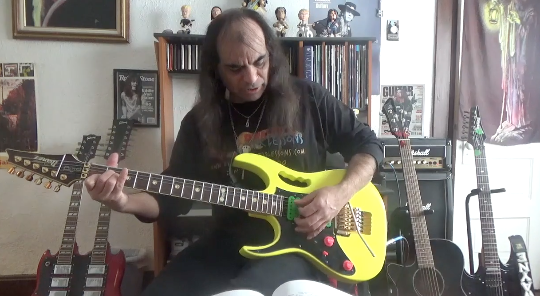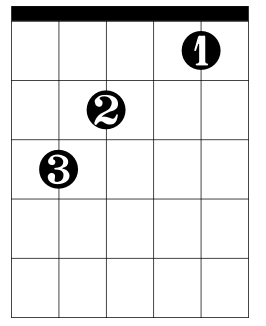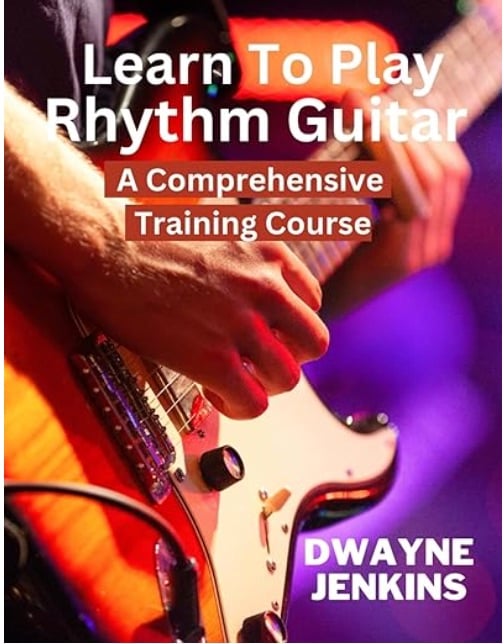In today's lesson, we are going to learn how to arpeggiate guitar chords for better rhythm guitar playing. This enhances your versatility and composition structure, as well as expands your knowledge of music.

#1: What is arpeggiated picking?
Arpeggiated picking is when you pick the strings of the chords individually. This allows you to create a softer, more melodic sound. As well as giving you a chance to develop your picking hand.
#2: The C major chord
This is a great chord to use as a jumping-off point. What I mean is that it is a great chord to transition into other chords. Chords such as G major, F major, or A minor, just to name a few. Master the C major chord, and then learn to jump to other chords easily.

#3: Use other common chords as well.
Once you master the C major chord, use other common chords to create a wide variety of arpeggios to compose distinctive musical landscapes. Chords such as G major, A major, D major, and E minor.




Chord transitions are not always the easiest, so make sure to work on this. I recommend you work on two chords at a time. C to G is a great way to start because these two chords are very popular in many songs. Then try different combinations. Like A to D, or G to E minor, or G to D. The more you work on these, the better you'll get. Quicker if you work on them daily.
Exercise #1: G major to C major

Exercise #2: C major to D major

Exercise #3: D major to A major

Exercise #4: E minor to C major

Ensure that when you review these, you go back and forth. Mix and match the chords as you improve, and you'll start to recognize songs as you do. Going forward isn't too difficult, it's going back that can be a bit challenging. Take on the challenge, and you'll be all the better because of it.
#4: Watch the video lesson below.
#5: Develop a steady rhythm
With the C major chord, pick down from the 5th string in a series of 4 notes, and then pick back up again to the 5th string. 5, 4, 3, 2, 1, 2, 3, 4, 5. This will give you a nice sequence that will allow you to use all five strings and all the notes that are in the C major chord.
Repeat the process with all the chords learned so far. This concept works with all chords, so if there are some you know that I didn't mention in this lesson, work with those as well. Any chords will do. I presented two at a time, but once you get that down, try adding a 3rd chord. Remember, many great songs only have 3 chords.
#6: Practice daily
When playing arpeggios, much practice is needed to get the sound correct. The reason for this is that every single note needs to ring out. For this to happen, you will need to be aware of your hand and finger positioning. As this will make a difference in whether or not you mute the other strings.
So make sure to pay attention to this. As it will make a huge difference in how your chords sound when you play them. Do this daily, and your hands and fingers will develop muscle memory and just go where they need to automatically. But you will need to practice daily to achieve this.
#7: Dive deeper into arpeggios
If you'd like to learn more about how to get the most out of your guitar chords to improve your rhythm guitar playing, I recommend you grab the book I authored and published, Learn How To Play Rhythm Guitar. This book is guaranteed to improve your rhythm guitar playing. That is, if you follow the lessons and practice daily.
Learn To Play Rhythm Guitar

If you have the desire to learn and are willing to put in the time, Learn To Play Rhythm Guitar can get you the desired results that you are looking for. A step-by-step method book that is designed for anyone. Even if you have no previous musical knowledge.
You'll learn to master rhythmic concepts and principles that will help you build a solid foundation. Even if you already play guitar, you can still learn a few gems from this book. Filled with photos, diagrams, and guitar notation that can easily be understood. Just grab the book, available on Amazon, and you'll be on your way to mastering the art of playing rhythm guitar.
#8: Private instruction is also available
In addition to authoring method books to help improve your learning, I also offer private guitar instruction. These are customized lessons that cater to the student's interests, skill level, and all ages are welcome.
Since everyone learns a bit differently, private lessons can offer tailoring to your learning style.
You can quickly build self-confidence, develop a better understanding, and have a fun learning experience. So if you feel this might work for you. Contact me at my website and we'll set up a time to talk and meet online, or in person. Whatever method works best for you.
Thanks for your time, and practice daily.
Until our next guitar lesson, take care.
Sincerely, Dwayne Jenkins


